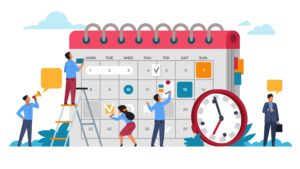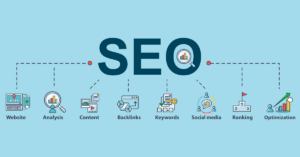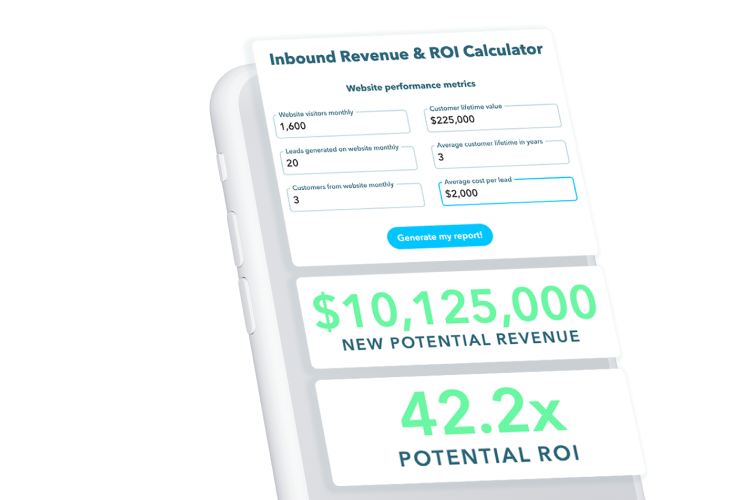 2892 Views
2892 Views  11 min read
11 min readA solid content marketing strategy is the backbone of any successful business. So whether you’re just dipping your toes into the digital marketing world or you’ve been doing it for some time, it never hurts to make sure your content strategy is top tier. In this post, we’re going to dive into how you can create an unfailing content marketing strategy to engage with your audience and take your business goals to new heights.
Regardless of the types of content you produce, you want to ensure that this content is both engaging and scannable. So how do you do that? Here are a few ways:
There are all kinds of content that you can include in your editorial calendar throughout the year. While some businesses choose to have their b2b content marketing strategy include all the types of content, others focus on simply perfecting a few content areas. Whatever you decide, it’s essential to use a variety of content that will allow you to connect with a wide range of users. Social content: It seems that lately, social content has been reigning supreme. So much so that some new businesses can create an entire following on one or two platforms without much of an online presence elsewhere. The great thing about social content is that companies can send one post out to various media. If you made an infographic for Facebook or Instagram, you could turn this same information into an informative YouTube video by utilizing an AI YouTube video maker tool. A fun video for TikTok can be changed into a carousel post for Pinterest. You have the freedom to mix and match content to your heart’s content (get it?). Blog posts: Blog posts are often the central piece of content that businesses choose to build around. You can create many other pieces of content from a blog post, and they’re great for building a relationship with your reader. In addition, blog posts are quickly consumed, they don’t take long to write, and it’s a quick way to provide readers with valuable information at little to no cost. To improve at creating engaging content, practice rephrasing and refining your material to make it more relevant and high-quality.However, if you choose blogs as your primary content source, make sure that you don’t wait too long between posts or fail to give readers a solution to their issues at the end of the post. You’ll end up losing your readers’ interest or failing to show them the value of your blog. Ebooks: Although writing an ebook can seem overwhelming at first, these long-form pieces of content can be instrumental towards establishing yourself as the authority on a subject. Since they’re often available as PDFs, ebooks make awesome lead generation magnets. Other content types you can use include:
Identifying and understanding the needs of your target audience will enhance the way you reach them.
Buyer personas are vital to figuring out your target audience and how to best appeal to them. But what exactly is a buyer persona? How will it help you narrow down your target audience and know what kind of content they want to consume? Let’s find out. A buyer persona portrays your target customer. This persona helps you understand the motives, needs, and wants of your best potential customers< In addition, these personas assist you in knowing what drives your customers to make a purchase and how you can speak to them. Here’s how to create a buyer persona:
It’s all too easy to assume that you know who your buyers are, but don’t fall victim to this. Collect data on your existing customers and followers and look at factors like:
Identifying this information is crucial when creating Business to Consumer (B2C) content. Why? Looking at your audience in this way allows you to view your buyers as real humans instead of a mass customer base.
You can’t reach your customers just by putting out great content. You need to reach them on the platforms they use. Find out where your target audience spends the most time online. You can do this by using a platform such as Google Analytics to see which platforms appear in your referral traffic report. You can also check out relevant hashtags and see what content gets shared the most across social platforms.
When thinking about your ideal buyer’s problems, ask yourself the following questions:
Answering these questions will make your buyer personas more three-dimensional and help you get inside the heads of your target audience.
Now that you know what issues your customers run into, you can pinpoint the goals they want to achieve. Even if your customers’ dreams don’t relate directly to your product, they can help you tweak your approach or brand voice. In addition, the information you collect can influence the overall direction of your content marketing efforts.
 Collect all of your research together and identify the shared characteristics among your audience. Once you have all of this together, you’ll have the foundation of your buyer persona. Your buyer persona could be a group of young women in their mid-twenties who work remotely, live in urban cities, and want to start investing. You’ll take all of these characteristics and transform them into someone you can relate to and understand. Give your buyer persona, a name, an age, and other defining characteristics. Think of it like a sample dating profile that gives you all the key points you need to know about a potential partner. Your buyer persona may look something like this:
Collect all of your research together and identify the shared characteristics among your audience. Once you have all of this together, you’ll have the foundation of your buyer persona. Your buyer persona could be a group of young women in their mid-twenties who work remotely, live in urban cities, and want to start investing. You’ll take all of these characteristics and transform them into someone you can relate to and understand. Give your buyer persona, a name, an age, and other defining characteristics. Think of it like a sample dating profile that gives you all the key points you need to know about a potential partner. Your buyer persona may look something like this:
While a list of characteristics doesn’t equal a buyer persona, this information will help you understand your target audience and appeal to them correctly.
To create content that benefits your audience, you need to understand what they’re searching for. You can do this in three ways:
Also Read – Digital Marketing Statistics 2024
 Gathering information is more effective when you focus on organizing that information.
Gathering information is more effective when you focus on organizing that information.
While planning your content for the upcoming year, you need to consider the goals of your content. For example, do you want to generate more leads? Increase website traffic? Or do you want to increase your TikTok followers? Whatever the case may be, the goals of your content determine where you post, how you post, and to whom your post is for. Engaging in content creation without a clear purpose will result in wasted resources, time, and effort of everyone involved.
Your content calendar template can be as simple as an Excel or Google Sheets spreadsheet, or you can use a specific content calendar platform. Although every calendar will be unique, most calendars include:
The types of channels and content you put out are dependent on buyer personas and target audiences. After all, you want to make sure your content falls into the right hands. So avoid spreading yourself too thin or posting purposeless content just to put something out. Instead, identify the most rewarding and essential platforms and focus on those first. You can post a mix of social media posts, press releases, and blog posts. To get the most out of your efforts, consider reposting blog posts to other platforms like LinkedIn or sharing an infographic from Twitter on Pinterest< This will also help you drive more traffic to your site while repurposing content.
The calendar year should serve as a framework when creating your content calendar. Go through the year and highlight all the days you plan on building content around — holidays, special events, workshops, seminars, etc. Doing this in advance will help you plan any seasonal content you’ll need during the year and understand how much work each piece of content will entail.
Now that you have all the critical dates out of the way, you can see where personalized content fits into your calendar. For example, there may be current news events or topics that grab the attention of those in your field. Leave room for articles or social media pieces to comment on the current happenings. If your company plans to launch a new product or expand, create space for press releases and other articles to promote new products. Plan on interviewing key people in the business? Video interviews or stories make great talking points across the web. No matter what additional content you choose to include, be sure that you don’t overbook yourself in the calendar. Each piece of content deserves its time in the limelight.
Evergreen content is your content calendar’s best friend. This content isn’t tied to a specific date or time and can be recycled into the calendar with updates. Planning for evergreen content prevents delays in content when you run into a hiccup or other pieces of content that need to be pushed back. Instead, save room in your content calendar for evergreen content that can be used at any time.
 Keyword stuffing is probably one of the worst things you can do for content on your website. Not only does it look and read bizarrely, but Google hates it too. But wait, I thought it was good to use keywords on my website! Don’t get us wrong; we love using keywords to bump up our SEO scores. We wouldn’t be Responsify if we didn’t. However, keyword stuffing does much more harm to your website than good. So how do you know if your blog posts or content products are suffering from keyword stuffing? Here are some types of keyword stuffing to avoid:
Keyword stuffing is probably one of the worst things you can do for content on your website. Not only does it look and read bizarrely, but Google hates it too. But wait, I thought it was good to use keywords on my website! Don’t get us wrong; we love using keywords to bump up our SEO scores. We wouldn’t be Responsify if we didn’t. However, keyword stuffing does much more harm to your website than good. So how do you know if your blog posts or content products are suffering from keyword stuffing? Here are some types of keyword stuffing to avoid:
A piece of content that’s trying to rank for the words “reusable water bottle” through keyword stuffing might look something like this: “Are you on a hunt for the best reusable water bottle? This spring, our reusable water bottle will have a fresh new design for eco-friendly drinkers. With our easy to clean spout and sweatproof exterior, this reusable water bottle will be your favorite item this season.” Do you see the problem? They used the keyword three times in a piece of copy that is 47 words long. This puts it over the threshold needed to rank on search engines, and your website will be penalized for content like this. Other than keyword stuffing, your content could be suffering from different types of over-optimization, such as:
Also Read – How to Achieve the Highest Content Marketing ROI
A lead generation or email funnel is one of the best ways your business can attract new customers. However, since you need customers to run a successful business, this lead generation process must be airtight. A lead generation funnel has three stages:
Capturing leads through an email funnel typically begins with you offering potential customers something in exchange for their email. This could be a template in the form of a PDF or a free upgrade on a purchase they made. Of course, the opt-in needs to seem valuable enough for them to give you their email, so give some thought to which piece of content fits best here. Make the buyer’s journey through your sales funnel an easy one. Your blog is where you’ll get most of your leads from, so don’t hesitate to incorporate relevant posts to build a relationship with your target audience. As a result, they’ll come to see you as a trusted friend in the industry, and they’ll be more willing to give out their email address when you ask for it. Once you get their contact information, they’ve now entered your sales process. You likely communicate with these people via email to encourage them to purchase and move them through the sales funnel stages. If you’ve done the first two steps correctly, you should have no issue closing the deal and moving your customer to make a purchase. Although they may be primed to buy your product, it’s still helpful at this stage to make one last play for why they should make a buying decision. To motivate them further, think about the content you have that appeals to the nature of human emotion. For example, you might include a case study or testimonials about your product to emphasize how customers feel after using your product.
Also Read – Content Marketing for Manufacturers: Everything You Need to Know
We know that regularly creating content and sharing it with your target audience is great, but you need to make sure that it works for you. To do that, you need to be open to measuring not only your success but your failures as well. What should successful content accomplish? Your content should:
If your content is not doing this, try to create each piece with these aspects in mind. Find out what types of content and lead generations are working — and which ones aren’t. You can measure the success of your content marketing strategy by looking at metrics like:
There are countless tools on the market to measure the success of your content marketing efforts. However, even if these tools show that your content efforts fail, you don’t have to throw in the towel. It may be that all you need is a little help to get the ball rolling once again.
Also Read – Combining The Best Content Marketing Tools for Success
Even the most successful content marketing strategies can use some improvement. The industry is changing every day, and your 2016 b2b content marketing strategy might not cut it anymore. For many companies, the next step in their efforts to improve the reach of their business is to bring in an outside source that specializes in content creation. Responsify offers content marketing services to help you make a more significant impact while increasing sales, revenue, and growth. We can help you build a customer-centered strategy, create targeted content, and make the most of your social media channels< Get started with a free assessment to see how Responsify can improve your content marketing strategy for the better.
Also Read – Content Creation Tools: What You Need and Don’t Need
A well-defined strategy starts with setting SMART goals (Specific, Measurable, Achievable, Relevant, Time-bound) that align with your growth objectives, sales funnel, and audience needs. Regular performance tracking ensures continuous alignment.
Understanding your target audience’s pain points, search intent, and preferences helps create content that resonates. Tools like Google Analytics, customer surveys, and social media insights help refine audience targeting.
Unique, value-driven content comes from deep research, storytelling, expert insights, and interactive formats like videos, infographics, and case studies. Analyzing competitors also helps identify gaps to capitalize on.
Key performance indicators (KPIs) like organic traffic, engagement rates, lead conversions, and return on investment (ROI) determine success. Regular reporting and A/B testing help refine strategies.
SEO is foundational to content marketing. Optimizing for keywords, internal linking, on-page structure, and backlinks ensures content ranks well. Want to improve your SEO-driven content strategy? Book a free assessment with Responsify today!
Transforming long-form content into social posts, infographics, videos, and email snippets extends its reach while maintaining brand consistency.
